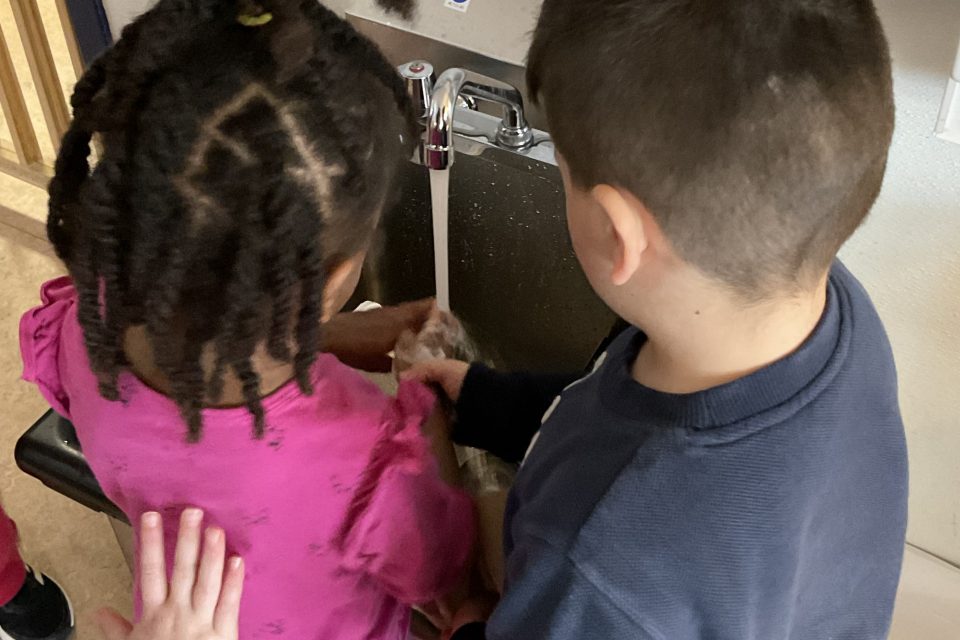Our Mission Statement
The Child Study Centre is guided by a three-fold mission:
- A commitment to providing all children and families with a high-quality, inclusive, accessible, and culturally responsive program.
- A commitment to training qualified early childhood educators by providing practicum placements and observation experiences for students in the Child and Youth Study program at MSVU.
- A commitment to engaging in and participating in research and initiatives relevant to early learning and child care happening within Nova Scotia.
Our Image of the Child
We believe that children of all ages hold rights as citizens in our society. This means that they have agency to guide their own learning as they navigate their worlds. We view children as competent, eager to learn, and able to make decisions that allow them to make meaning of their world.
Learning through Play
The Child Study Centre’s educational program emphasizes learning through play. A play-based approach involves both child-initiated and educator-supported learning through meaningful interactions to scaffold children’s development. The Nova Scotia’s Early Learning and Child Care Framework defines play-based learning as “A context for learning through which children organize and make sense of their social worlds, as they actively engage with people, objects, and representations.” At the Child Study Centre we intentionally provide play opportunities that expand on children’s interests and challenge their thinking and development. Educators do this through observations and by creating visual documentation of the children’s work to thoughtfully support each child’s engagement.
“Play is the work of children.” Jean Piaget
Family Centered
We see families as essential to the overall success of the Child Study Centre community. We strive to build authentic opportunities for communication, input, and feedback, and we welcome the involvement of families in all aspects of our program. It is important that the children see their families’ involvement and culture reflected in our environment. We value the knowledge, wisdom, and traditions that each family shares with us. This contributes to a diverse environment which allows children and families to learn and to celebrate each other.
The centre provides a nurturing home-like environment for children with the goal of meeting every child’s needs within the Child Study Centre family.
Emergent Curriculum
The CSC follows an emergent curriculum approach where educators seek to identify the children’s interests to support learning. Teachers ask questions and listen for the children’s ideas, hypotheses, and theories. Teachers plan activities and projects based on their observations of the children. The environment in an emergent curriculum program acts as the “third teacher.” Our classrooms have been designed to welcome the children and we carefully provision our learning environments, both indoors and outdoors, in ways that will appeal to children’s interest, curiosity, and creativity. We encourage children to treasure and respect our natural environment as we spend large blocks of time in our outdoor play space. This outdoor time allows children to play freely with each other, exploring the natural elements of the outdoors as they challenge themselves.
Our Atelier
At the Child Study Centre we are privileged to have a “maker space” or atelier. This is a light filled room dedicated to providing space for small groups of children to be creative. In our atelier, children can explore the arts, music, movement and storytelling. In addition, many of the materials in the atelier and our classrooms are composed of “loose parts” which are recycled, repurposed and found materials that are open ended in their use. These materials can be combined, redesigned and set up in multiple creative ways by children. Working with such materials supports divergent thinking and invention.
Portfolios
Each child in the program has their own portfolio that documents their time and learning while they are with us. The portfolio contains samples of the child’s artwork and writing along with visual stories of their interactions and experiences. A portfolio is a form of “authentic assessment” as it is a record of everyday experiences and learning. The portfolio is the child’s to keep when they graduate.
